

|
Canadian ChampCar Lights was founded by Lee Abrahamson to prepare new race drivers for top-tier racing series.
ChampCar Lights represented value for money, with a purse of over $100,000 Canadian, TV coverage, and a presence
at major events such as the Grand Prix de Trois Rivieres and the American Le Man Series weekend at Mosport International Raceway.
Canadian ChampCar Lights uses identical Van Diemen 1995/96 FRS chassis and Neon motors from engine partner Chrysler. The series strives to ensure that competitors benefit from equality of equipment. The value of the Canadian ChampCar Lights also comes from increasing benefits for sponsors, with great-looking cars and outstanding television coverage.
|
| The Canadian ChampCar Lights Championship was sanctioned by CASC-OR and FAQ. All drivers are required to have a minimum CASC-OR or FAQ regional license. The duration of practice sessions for road courses is a minimum of 40 minutes and 20 minutes for ovals. Qualifying for road courses is a minimum of 20 minutes. Ovals have single-car qualifying. Road races are a minimum of 50 km in length. Ovals vary according to track. Rolling starts are used for all races. All points from all races count towards the championship. Points are awarded for the first six places. |
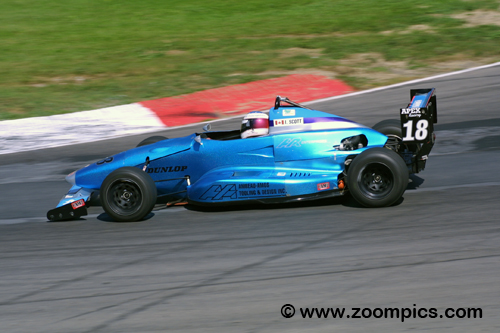
|
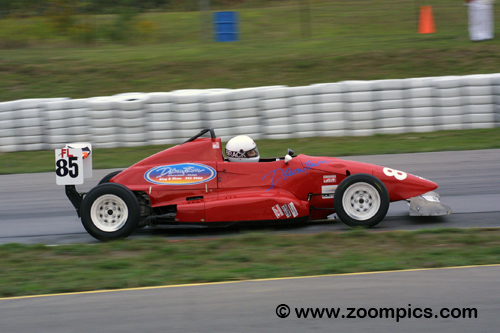
|
The Canadian ChampCar Lights racing car is an evolution of the 1995/96 Van Diemen European Formula Renault car – Van Diemen FRS96.
The chassis is modified to ChampCar Lights specifications by incorporating the following updates:
|
| The Canadian ChampCar Lights is powered by a four-cylinder 2.0-liter Chrysler Neon engine with double-overhead camshafts and four valves per cylinder. This unit produces 180 bhp @ 7,100 rpm and of 133 lb-ft of torque @ 5,500 rpm. The engine is fitted with a purpose-built cast aluminum intake and dry sump system. Powerplants are leased from the Engine Leasing Division of Canadian ChampCars Ltd. All motors are prepared and dynoed by Performance Engineering. Only engines that are within two-percent of 178 bhp are shipped to competitors. |
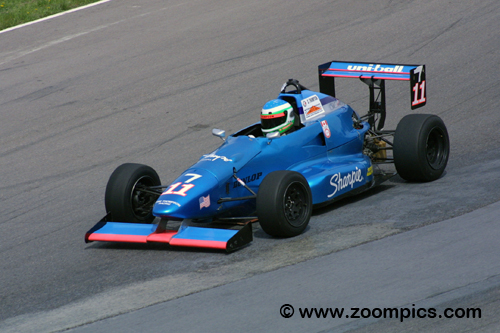
|
| Van Diemen FRS96 | ChampCar Lights |
|---|---|
| Chassis | Single seat, welded tubulur frame Van Diemen FRS96 with fibreglass bodywork |
| Suspension | double wishbone with push rods, coil springs and dampers |
| Displacement | 2.0 liter - Chrysler Neon engine |
| Valves | 16 - 4 valves per cylinder |
| Horsepower | 180 bhp @ 7,100 rpm |
| Torque | 133 lb-ft of torque @ 5,500 rpm |
| Maximum RPM | 7,800 rpm |
| Transmission | Hewland LD202 non-syncromesh, five-speed forward and reverse |
| Base Weight | 1,080 pounds (491 kilos) |
| Top Speed | 160 mph (258 kph) |
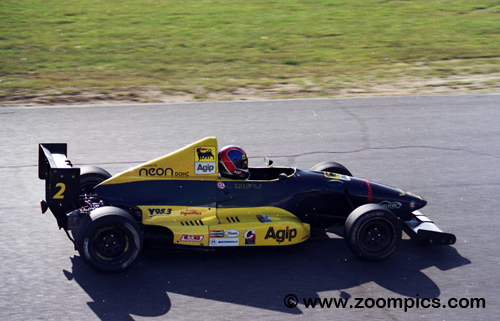
|
The Canadian ChampCar Lights race car uses a Hewland LD200 gearbox with either a four-speed or a (LD202) 5-speed gearbox. The team can change gear ratios to be optimal for each circuit. Stopping the Van Diemen are four-disc brakes. Each driver is permitted a new set of tires for every event. However, the set of tires used in qualifying must be used for the race. The car weighs 1,080 pounds (491 kilos) without the driver. Depending on the gearing, the FRS96 is estimated to have a top speed of 160 mph (258 kph). |
| The car costs approximately $55,000 Canadian. The price includes the fitting of the engine. The engine lease is $8,500. A deposit of $30,000 is due at the time of the order. The Van Diemen must be purchased through the ChampCar Lights Series. Cars are available for "arrive and drive." The cost is approximately $10,000 Canadian per event. At every race, the Canadian ChampCar Lights series and Chrysler provide technical support. |
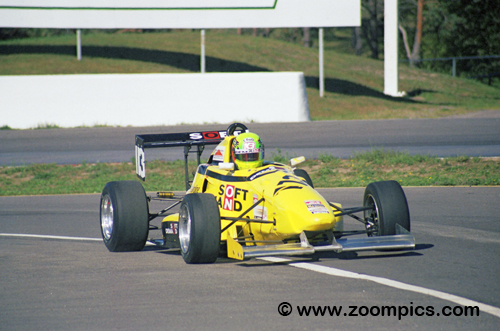
|
|
The 1997 season consisted of six events.
The Championship's inaugural race was held at Shannonville Motorsport Park on June 29.
Shannonville hosted two more rounds, and the remaining races were staged at Mosport International Raceway.
Paolo Dal Cin won the Championship with the LA Rainbow Racing Team. Dal Cin entered the series with Formula 1600 experience and finished second in the 1994 Canadian Championship. After capturing the ChampCar Lights title, he joined the Motorola Cup series and earned the 1998 Touring Class crown. The runner-up was Sasa Durdjevic. Finishing third was Mark Bahenski, followed by Francis Macri, Martin Gray, and Gary Passer. The payout for the season was $25,000, with Dal Cin taking home $9,200. Round one of the 1998 championship was held at Mosport International Raceway on the Victoria Day weekend. This event was followed by the oval at Delaware Speedway and two rounds at Shannonville Motorsport Park. At the end of July, competitors took to the oval at Mosport Speedway, followed by a stop at Cayuga Speedway. The final two races were contested at Mosport International Raceway. Prize money and points were awarded to the top six finishers. A victory paid $1,500, and the winner collected ten points. Sixth place was worth $350 and one point. Sasa Djurdjevic of Synergy Racing Team was the 1998 ChampCar Lights Champion. Djurdjevic also won the series first race in 1997, which was held at Shannonville Motorsport Park. Mark Bahensky was the series runner-up and Ryan Vella of Thompson Motorsports was the 1998 Rookie-of-the-Year. The tentative 1999 eight-race schedule included five races in Ontario and three "invitational" events in Quebec. Three of the eight events are ovals: Delaware, St. Eustache, and Cayuga, and five will be road courses: Trois Rivieres, St. Felicien, and three visits to Mosport. The series had a minimum purse of $104,000 Canadian. Prize money was paid at $500 per point and in cash.
|
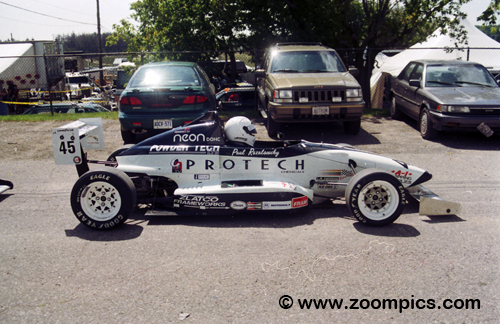
|
Paul Rozalowsky of LA Rainbow Racing won the Canadian ChampCar Lights Championship and earned the Rookie-of-the-Year title. Rozalowsky won over $40,000 Canadian, which paid for a ride in the 1999 Formula Palmer Audi winter series in England. He also competed in the European Formula Palmer Audi Series for the 2000 season. His top result in the European Formula Palmer Audi Series was in round nine Spa, Francorchamps, where he finished ninth overall and second in the Junior Class. |
|
Eight events made up the 2000 schedule.
The season started in May at Mosport International Raceway, followed by Autodrome Chicoutimi and Le Grand Prix Player's de Trois Rivieres.
The series returned to Mosport in rounds four and five. On Labour Day weekend, teams traveled to Autodrome St-Eustache. The finale was held in Mosport.
|
| The final weekend of the championship was a doubleheader at Mosport, but it was not without drama. In the last race of the year, Shawn Thompson, the points leader, crossed the finish line first but was assessed a penalty for jumping the green flag. He was moved to second place, which was enough to secure the 2000 ChampCar Lights Championship. However, it was provisional as Thompson's engine was protested and sent for inspection. After being checked, the engine was declared legal, and Thompson was the official 2000 Champion. |
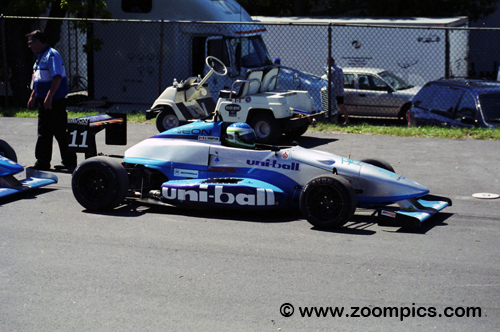
|
|
There were ten races on the 2001 Canadian ChampCar Lights calendar.
The season started on Victoria Day weekend at Mosport International Raceway, which would host two races later in the year.
The schedule included events at Watkins Glen International and the Mid-Ohio Sports Car Course.
The series made stops in Quebec at Ste-Croix, St-Eustache and Mont-Tremblant.
Several events on the 2001 schedule were combined with the teams from the US F3 Series.
The two series will combine for all 3 events at Mosport and Mid-Ohio.
|
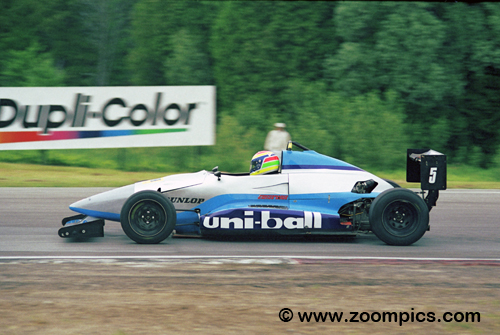
|
UK-based Everitt-Boles Motorsport Insurance Management became the title sponsor of the Canadian Champ Car Lights series.
The championship became known as The Everitt-Boles Canadian Champ Car Light Series.
Rookies dominated the top 3 positions in the 2001 Canadian ChampCar Lights racing series. Kyle Herder of Team Thompson was the points champion. Finishing in second and third were L.A. Rainbow Racing teammates Kiyoto Yamamoto and Michael Brooks. |
|
ChampCar Lights organizers had aggressive plans for 2002.
The schedule consisted of eleven rounds, of which six would be contested in the US.
The 2002 season was intended to be the end for the Van Diemen FRS96 race cars as they were bound for Shannonville Motorsports Park where they would be used at the PromoSport Canada Competition Driving Academy. The vehicles will also be used in Formula Junior, a new racing school series with events running at selected regional races at Mosport and Shannonville. The PromoSport Racing School and the Formula Junior Series were planned in the spring of 2003. In the interim, plans were made to introduce a new class to the existing series. The Scholarship Class was for the current Van Diemen models. New for 2002 was the Championship Class, which utilized the new Dome FD99 carbon composite chassis with a 220 bhp 2000 cc MUGEN RS-X engine. In addition to these plans, the ChampCar Lights Racing Series organizers announced a new series that would join ChampCar Lights. The new series was to be called ChampCar F6000 and was based on the 1994 and 1997 Indy Lights chassis using the 420 HP Buick V6.
|
| Organizers kept adjusting the schedule throughout the year and moved the opening race from May to the weekend of August 16-18 at Mosport. But by September 2002, the ChampCar Lights racing had been canceled. Anticipated low car counts and scheduling difficulties led to the decision. The Van Diemen FRS96 owners found a home in CASC Ontario Region events competing in the Formula Libre category. Unfortunately, the Canadian ChampCar F6000 never got off the ground. |
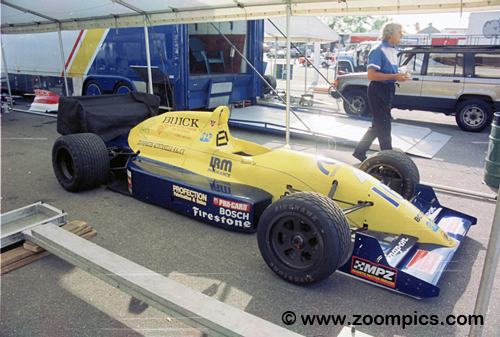
|

| Copyright Notice: |
| All content (photographs and text) appearing on this website are the exclusive property of www.zoompics.com and are protected under International copyright laws. The subject matter on this website may not be reproduced, copied, stored or manipulated. |